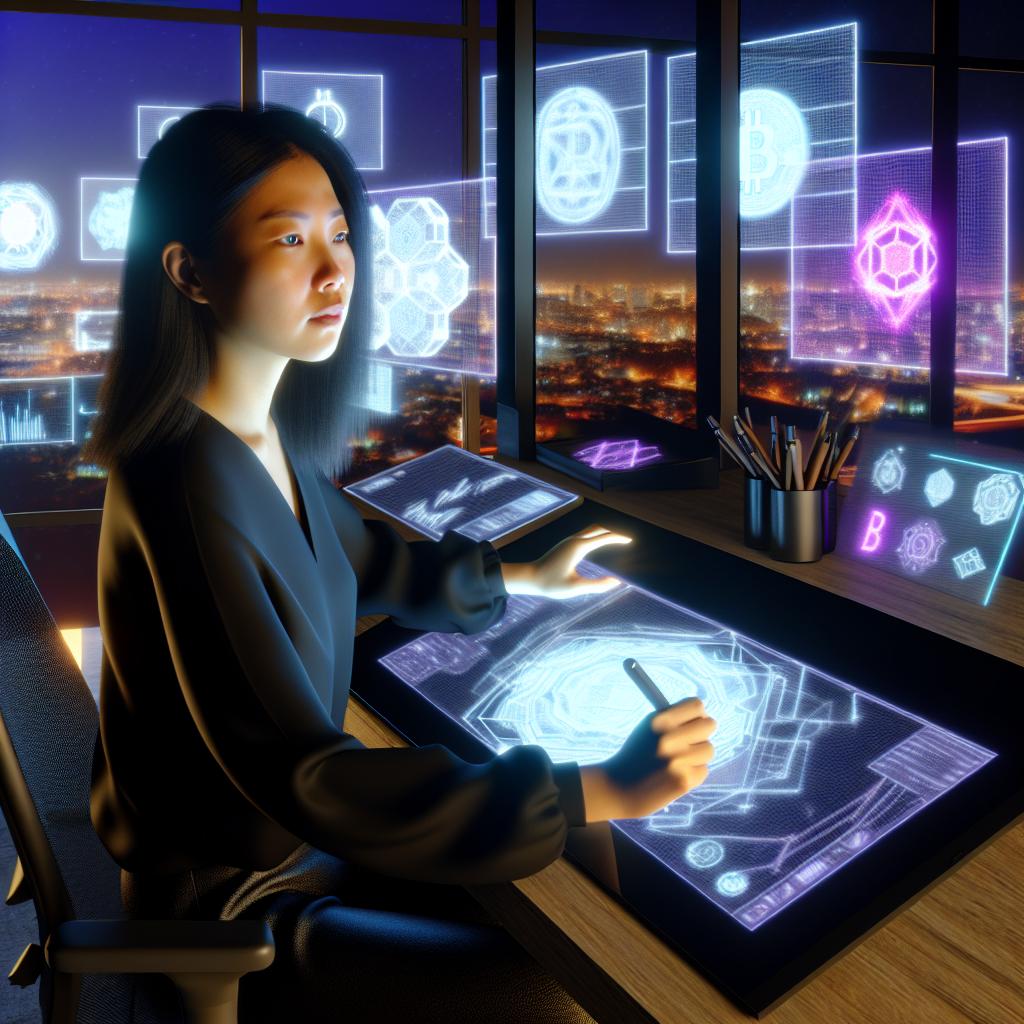Introduction
Let’s explore creating virtual property staging software for real estate marketers
Overview of the Need for Property Staging in Real Estate
Property staging plays a crucial role in real estate marketing.
It enhances the visual appeal of homes, making them attractive to potential buyers.
Successful staging can significantly impact how quickly a property sells.
By showcasing a home’s potential, staging helps buyers envision their future there.
In today’s competitive market, effective staging becomes even more critical for sellers.
The Evolution of Virtual Tools in Marketing
Over the past decade, technology has transformed real estate marketing.
Virtual tours and panoramic photography have become standard tools for showcasing properties.
These innovations allow buyers to explore homes from the comfort of their own space.
As technology advances, so do the capabilities of marketing tools available to real estate professionals.
Virtual property staging software for real estate marketers is one such advancement that allows agents to create appealing and realistic spaces without physical alterations.
By using virtual property staging software for real estate marketers, agents can enhance their listings and attract more potential buyers.
This technology not only saves time and costs but also provides a competitive edge in a crowded market.
Purpose and Significance of Creating Virtual Property Staging Software
Creating virtual property staging software addresses a pressing need in real estate marketing.
This software simplifies the staging process for agents and sellers alike.
It enables users to select furniture, decor, and layouts that enhance property presentation.
With user-friendly interfaces, this software can empower even non-tech-savvy users.
The significance lies in its ability to reduce costs associated with traditional staging.
By eliminating the need for physical items and labor, it saves sellers both time and money.
Moreover, virtual staging allows for customization tailored to different buyer demographics.
Agents can easily create multiple staging options to appeal to various tastes and preferences.
This versatility increases a property’s marketability and competitiveness.
Ultimately, the introduction of virtual staging software is a game-changer for real estate marketers.
It enhances property showcasing, drawing in potential buyers, and closing deals more efficiently.
Understanding Property Staging
Definition and Importance of Property Staging
Property staging refers to the process of preparing a home for sale.
It involves enhancing the home’s appeal to potential buyers.
Effective staging highlights the property’s strengths and minimizes its weaknesses.
The primary goal is to create a welcoming environment that resonates with buyers.
This process can significantly influence the buyer’s perception and decision-making.
Staging plays a crucial role in the real estate market.
It helps buyers envision themselves living in the space.
A well-staged home can elicit emotional responses, encouraging quicker decisions.
Additionally, staging can enhance the property’s value, potentially leading to higher offers.
This emotional connection is often what drives a sale, making staging an essential marketing strategy.
Benefits of Staging a Property in the Real Estate Market
- Increased Buyer Interest: Staging creates an inviting atmosphere that attracts prospective buyers.
- Higher Selling Price: Staged properties frequently sell for more than unstaged homes. Statistics often show a marked difference in final selling prices.
- Quicker Sales: Homes that are properly staged tend to sell faster than those that are not. This speed can reduce carrying costs for sellers.
- Enhanced Online Appeal: High-quality photos of staged homes look more appealing online, improving listing performance. Quality images increase engagement on real estate platforms.
- Fewer Price Reductions: Staged homes may require fewer price reductions during the selling process. Sellers can often maintain their initial asking price.
- Better First Impressions: Staged homes make a strong first impression, which can influence a buyer’s initial perception. A good first impression can oftentimes lead to more offers.
- Market Differentiation: Staging helps properties stand out in a competitive market. Unique staging can differentiate a home from others that are similar.
Traditional vs. Virtual Staging: Pros and Cons
When it comes to staging a property, real estate marketers often choose between traditional staging and virtual staging.
We Design & Develop Websites, Android & iOS Apps
Looking to transform your digital presence? We specialize in creating stunning websites and powerful mobile apps for Android and iOS. Let us bring your vision to life with innovative, tailored solutions!
Get Started TodayEach option presents its pros and cons, which we will explore below.
Traditional Staging
Pros
- Creates a tangible experience for potential buyers. Buyers can walk through the staged space.
- Utilizes real furniture and decor, providing an authentic feel. Buyers can relate more easily to the environment.
- Allows for personalization by showcasing design styles that appeal to local buyers. Real items can connect with regional preferences.
Cons
- Can be time-consuming to set up and tear down. Physical staging often involves logistics and moving furniture.
- Involves higher costs due to rental fees for furniture and decor. Direct expenses can add up quickly for sellers.
- May not effectively highlight the space if furniture choices are poor. The wrong furniture can detract from the home’s appeal.
Virtual Staging
Pros
- Lower costs compared to traditional staging. Virtual staging eliminates rental fees and labor costs.
- Quick turnaround time for staging, often within days. Virtual staging can be completed rapidly with favorable software tools.
- Flexibility in design choices, allowing for diverse styles to be tested. Marketers can cater to different buyer preferences smoothly.
- Maintenance-free environment since no real items are used. Virtual stages require no upkeep, avoiding wear and tear.
Cons
- Lacks the tactile experience of actual furniture and environments. Buyers cannot physically feel or see the items in person.
- Potential for buyers to be skeptical of the images. Some may question the authenticity of virtual designs.
- Risk of misrepresentation, particularly if images are overly enhanced. Buyers can feel misled when visiting the actual property.
As real estate marketers weigh these options, it becomes crucial to consider the target market.
Understanding buyer expectations and preferences can guide the decision between traditional and virtual staging.
Both methods have their place, depending on the specific property and market dynamics.
Ultimately, the choice of staging should align with broader marketing strategies in real estate.
The effectiveness of staging influences how quickly a home sells and at what price.
When done correctly, staging can yield great returns on investment, allowing property marketers to cater to both sellers and buyers effectively.
Read: Custom-Built Property Valuation Tools for Real Estate Developers
Market Analysis
Current Trends in Real Estate Marketing
The real estate market has undergone significant transformations in recent years.
Today, technology plays a crucial role in marketing properties.
Here are some current trends shaping real estate marketing:
- Virtual Reality (VR) and Augmented Reality (AR): These technologies allow potential buyers to experience properties virtually. They can tour homes without traveling physically.
- Video Marketing: Agents use video to showcase properties and neighborhoods. Engaging videos make listings more appealing and informative.
- Social Media Dominance: Platforms like Instagram and Facebook have become essential for marketing. They facilitate direct interaction between agents and buyers.
- Data-Driven Marketing: Agents increasingly rely on data analytics to understand buyer behavior. They use insights to tailor their marketing strategies.
- Personalization: Customized marketing efforts cater to specific buyer personas. Personalization enhances user experience and increases engagement.
Target Audience for Virtual Staging Software
Understanding the target audience is vital for developing effective virtual property staging software.
Here are the key audience segments:
- Real Estate Agents: They need tools to enhance property listings. Agents often work with multiple properties and require efficient staging solutions.
- Home Stagers: These professionals specialize in preparing homes for sale. Virtual staging allows them to provide clients with cost-effective solutions.
- Real Estate Investors: Investors seek ways to maximize property value. Virtual staging can help them visualize potential renovations and improvements.
- Homeowners Selling Properties: Individual sellers can benefit from staging software. They aim to present their homes attractively to potential buyers.
- Real Estate Marketing Agencies: These agencies provide specialized services to clients. Virtual staging enhances their marketing capabilities.
Competitive Landscape: Existing Solutions and Their Limitations
The market for virtual staging solutions has grown significantly.
As a result, several products exist to meet the demand.
However, many of these solutions come with limitations.
Understanding these gaps can help in creating a better product.
Here’s a look at the current competitive landscape:
Existing Solutions
- VHT Studios: This platform provides virtual staging services. However, it often relies on manual input, making it time-consuming.
- BoxBrownie: BoxBrownie offers virtual staging software. While their interface is user-friendly, customization options are somewhat limited.
- VisualStager: It allows users to stage properties quickly. However, it lacks a comprehensive library of furniture and décor.
- HomeByMe: HomeByMe allows users to design spaces digitally. Its complexity can deter users with limited tech skills.
Common Limitations
- Limited Customization: Many existing solutions do not offer enough customization options. Users want to see their unique vision come to life.
- User Experience Issues: Complicated interfaces can frustrate users. Simple and intuitive designs are often more appealing to the target demographic.
- High Cost: Some solutions are prohibitively expensive. Budget constraints can limit their appeal to smaller businesses and individual sellers.
- Lack of Realistic Renderings: Not all programs deliver high-quality, realistic visuals. Buyers expect images that accurately represent the spaces.
- Slow Turnaround Times: Time is of the essence in real estate. Solutions that take too long to deliver can be detrimental to the selling process.
In summary, the real estate marketing landscape is evolving.
Virtual reality and data-driven approaches are leading the way.
Identifying the target audience ensures that the virtual staging software meets their specific needs.
The current competitor offerings highlight significant gaps.
Addressing these limitations can pave the way for innovation in virtual property staging.
Read: AI-Powered CRM Software for Real Estate Agents: Enhancing Client Management
Key Features of Virtual Property Staging Software
Virtual property staging software for real estate marketers offers a variety of features.
These features enhance the marketing capabilities of real estate professionals.
By utilizing virtual property staging software for real estate marketers, agents can showcase properties effectively.
This technology allows them to create appealing visuals that attract potential buyers.
Additionally, virtual property staging software for real estate marketers provides cost-effective solutions for showcasing homes.
It eliminates the need for physical staging, saving time and resources.
Finally, leveraging virtual property staging software for real estate marketers ensures a competitive edge in a crowded market.
This innovative tool is indispensable for effective property marketing.
User-friendly interface and accessibility
A user-friendly interface is crucial for ensuring that real estate professionals can utilize the software without extensive training.
The software should have an intuitive design, allowing users to navigate with ease.
Key aspects include:
We Design & Develop Websites, Android & iOS Apps
Looking to transform your digital presence? We specialize in creating stunning websites and powerful mobile apps for Android and iOS. Let us bring your vision to life with innovative, tailored solutions!
Get Started Today- Simple Navigation: A clear layout allows users to find tools and features quickly.
- Guided Tutorials: Step-by-step guides help newcomers understand the software.
- Accessible Support: Quick access to customer support enhances user satisfaction.
- Multi-Device Compatibility: The software should be usable on desktops, tablets, and smartphones.
- Customizable Dashboards: Users can personalize their workspace to fit their preferences and needs.
These features ensure that users have a seamless experience, regardless of their technical skill level.
This accessibility attracts a broader range of real estate marketers.
3D modeling and rendering capabilities
A core functionality of virtual property staging software is its 3D modeling and rendering capabilities.
This feature enables users to create realistic representations of spaces.
Important aspects include:
- High-Quality Renderings: Generate photorealistic images that showcase properties in vivid detail.
- Virtual Walkthroughs: Users can create immersive experiences that allow potential buyers to explore homes.
- Dynamic Lighting Effects: Adjust lighting to highlight the best features of a property.
- Materials Library: Access a wide range of textures and materials for realistic finishes.
- Instant Previews: Users can see changes in real-time, making alterations efficient.
These capabilities empower marketers to present properties in captivating ways that resonate with potential buyers.
3D modeling elevates flat, static images into engaging visual narratives.
Integration with real estate listings and CRM systems
Seamless integration with existing real estate listings and customer relationship management (CRM) systems is essential.
This feature streamlines processes and increases efficiency.
Key points include:
- Automatic Data Syncing: Ensure that property information is always up-to-date across platforms.
- Easy Listing Management: Users can manage multiple properties easily from one central interface.
- Lead Tracking: Collect and track leads generated from staged properties.
- Enhanced Marketing Campaigns: Integrate virtual staging images directly into property listings.
- Collaboration Tools: Facilitate communication among team members, clients, and stakeholders.
Effective integration boosts overall productivity.
Real estate marketers can focus more on strategy and less on logistical challenges.
Customization options for furniture, décor, and layouts
Customization is a significant advantage of virtual property staging software.
Users can tailor every aspect of the staging to fit the target audience’s preferences and specific property characteristics.
Important features include:
- Extensive Furniture Catalog: Access a wide variety of furniture pieces in different styles and colors.
- Flexible Layouts: Rearrange furniture and décor to optimize space usage.
- Style and Theme Options: Choose from modern, traditional, rustic, and more thematic styles to appeal to different buyers.
- Personalized Branding: Incorporate logos and branding elements to maintain a consistent marketing strategy.
- User-generated Content: Allow users to upload custom items or décor that reflect unique preferences.
Customization makes each virtual staging project unique.
It aligns closely with client requests and market trends, enhancing property appeal.
VR and AR applications for immersive experiences
Virtual and augmented reality applications take property viewing to an unprecedented level.
These technologies create immersive experiences that engage potential buyers more effectively.
Key points include:
- Virtual Reality Tours: Allow users to experience properties from the comfort of their homes.
- Augmented Reality Features: Enable potential buyers to visualize furniture in real-time as they walk through the space.
- Enhanced Engagement: Users can interact with a space, promoting deeper emotional connections.
- Mobile Compatibility: Access VR and AR experiences on mobile devices for added convenience.
- Social Sharing Options: Allow users to share their experiences across social media platforms for increased exposure.
These advanced features not only enhance user engagement but also differentiate real estate listings in a competitive market.
They appeal to tech-savvy buyers looking for unique and interactive solutions.
Therefore, the key features of virtual property staging software create a powerful toolkit for real estate marketers.
With user-friendly interfaces, 3D modeling capabilities, integration with essential systems, customization options, and immersive VR/AR experiences, this software transforms property marketing strategies.
These features work synergistically to enable real estate professionals to present their listings in the best possible light, ultimately driving sales and improving the buyer’s experience.
Read: Integrating IoT in Real Estate: Smarter Property Solutions

Development Process
Identifying the Right Technology Stack
Choosing the right technology stack is critical for creating virtual property staging software.
A well-chosen stack enables smooth functionality and enhances user experience.
Start by considering the following aspects:
- Frontend Framework: Select a responsive framework like React or Angular.
- Backend Technology: Use Node.js or Django for server-side programming.
- Database: Opt for a robust database solution like PostgreSQL or MongoDB.
- Cloud Hosting: Utilize cloud services such as AWS or Google Cloud for scalability.
- APIs: Integrate third-party APIs for additional functionalities like payment processing.
- Graphics Engine: Employ a powerful graphics engine like Unity or Unreal Engine for rendering visuals.
Research each component carefully.
Ensure the chosen tools align with your project goals and user needs.
Scalability should be a priority, allowing room for future enhancements.
Collaborating with Real Estate Professionals and Designers
Collaboration with real estate professionals and designers is vital for successful development.
Their insights help shape the application’s features and functionality.
Follow these steps:
We Design & Develop Websites, Android & iOS Apps
Looking to transform your digital presence? We specialize in creating stunning websites and powerful mobile apps for Android and iOS. Let us bring your vision to life with innovative, tailored solutions!
Get Started Today- Conduct Interviews: Meet with real estate agents to understand their needs and pain points.
- Gather Feedback: Present designs and gather constructive criticism to refine ideas.
- Workshops: Organize workshops to explore trends and best practices in property staging.
- User Personas: Develop user personas to guide design decisions based on real professionals’ profiles.
- Prototyping Sessions: Include both agents and designers in prototyping sessions to ensure usability.
Their input provides valuable perspectives.
This collaboration fosters a user-centric design approach that appeals to end users.
Prototyping and Testing Features with End-Users
Prototyping allows you to visualize your software before full-scale development.
Create wireframes and interactive prototypes for user testing.
Engage end-users in this process by:
- Initial Prototypes: Create low-fidelity prototypes to test core functionalities.
- Usability Testing: Observe users interacting with prototypes to identify any obstacles.
- A/B Testing: Test two versions of a feature to determine which performs better.
- Feedback Sessions: Hold sessions where users can provide their thoughts on the interface.
- Iterate Quickly: Revise designs based on user feedback to improve the prototype.
Using user feedback in prototyping stages helps identify and resolve issues early.
It ensures the final product meets user expectations and functions as intended.
Feedback Loops and Iterations for Refining the Software
Establishing feedback loops is essential for software refinement.
Continuous input from users informs ongoing iterations.
Implement the following strategies:
- User Surveys: Conduct periodic surveys to gather user experiences and satisfaction levels.
- Bug Reporting System: Create an easy-to-use bug reporting system for users to report issues.
- Analytics Tracking: Incorporate analytics to monitor user interactions and software performance.
- Regular Updates: Schedule regular updates to fix bugs and add requested features.
- Community Forums: Establish forums where users can exchange ideas and provide feedback.
Incorporating continuous feedback mechanisms leads to a more refined and effective product.
It positions your software as a top solution for virtual property staging in the real estate market.
Each phase of the development process plays a significant role in creating successful virtual property staging software.
By identifying the right technology stack, collaborating effectively with professionals, prototyping with end-users, and establishing strong feedback loops, developers can craft an intuitive, responsive, and valuable tool for real estate marketers.
This approach not only ensures technical accuracy but also meets the needs of users, ultimately driving adoption and success in the market.
Read: Cloud-Based Solutions for Efficient Real Estate Management
Marketing the Software
Successful marketing plays a vital role in the adoption of virtual property staging software for real estate marketers.
Real estate marketers need to recognize the value of this innovative tool for enhancing property listings.
To effectively reach this audience, businesses must implement targeted strategies that resonate with potential users of virtual property staging software for real estate marketers.
By highlighting its unique benefits, companies can demonstrate how virtual property staging software for real estate marketers simplifies the marketing process.
Ultimately, this strategic approach will lead to increased awareness and usage of virtual property staging software for real estate marketers.
Strategies for Reaching Real Estate Marketers
Identifying and connecting with real estate marketers requires a multifaceted approach.
Here are several effective strategies:
- Industry Networking: Attend real estate trade shows and seminars. Networking opportunities at these events allow for direct engagement with potential clients.
- Partnerships: Collaborate with real estate agencies or associations. These partnerships can provide access to a wider audience, increasing visibility for your software.
- Targeted Email Campaigns: Create email lists of real estate professionals. Tailor your messages to address their needs and showcase how your staging software can solve their challenges.
- Webinars and Workshops: Host educational webinars that demonstrate the benefits of virtual staging. Educating your audience can build trust and interest in your product.
- Search Engine Optimization (SEO): Optimize your website for search engines. Use relevant keywords that real estate marketers search for, increasing organic traffic to your offerings.
Utilizing Social Media and Online Platforms for Promotion
Social media platforms serve as powerful tools for promoting software.
Here’s how to leverage them effectively:
- Engaging Content: Create sharable content that highlights the software’s features. Use videos, infographics, and blog posts to share valuable information.
- Paid Advertising: Use targeted ads on platforms like Facebook and LinkedIn. This approach helps reach specific demographics, increasing the chances of conversion.
- Influencer Partnerships: Collaborate with real estate influencers. An endorsement from a trusted influencer can enhance credibility and attract users.
- User-generated Content: Encourage users to share their experiences online. User testimonials and success stories can effectively showcase the software’s benefits.
- Regular Updates: Keep your audience informed about new features. Regular posts can keep the audience engaged and spark their interest continuously.
Case Studies and Testimonials from Early Adopters
Real-world evidence strengthens marketing efforts.
Case studies and testimonials from early adopters provide social proof.
Here’s how to leverage these resources:
- Success Stories: Develop case studies showcasing how the software benefited early users. Highlight significant metrics like time saved or increased sales.
- Video Testimonials: Create short videos featuring real estate marketers discussing their experiences. Visual content is often more engaging than text alone.
- Highlight Unique Use Cases: Showcase different ways early adopters utilized the software. Share unique scenarios that resonate with potential clients in varying niches.
- Provide Data-Driven Results: Include statistics to support claims. Showing before-and-after scenarios can draw interest through tangible results.
- Feature User Testimonials on Your Site: Create a dedicated testimonial section on your website. Displaying authentic reviews helps to establish trust and reliability.
Offering Free Trials or Demos to Attract Users
Offering free trials or demos can significantly boost user adoption.
Potential clients appreciate the chance to try before they buy.
Here are several methods to implement this strategy:
- Limited-Time Free Trials: Allow users to explore your software for a limited time. Provide full access to features during this trial period.
- Interactive Demos: Create an interactive demo that showcases software functionality. Use guided tours to help potential users navigate through features.
- Onboarding Support: Offer dedicated support during the trial. Help users understand how to maximize the software’s capabilities during their exploration.
- Feedback Loop: Collect feedback from trial users. Understanding their experience can lead to software improvements and increase satisfaction.
- Incentives for Conversion: Offer discounts or special deals for users who convert after a trial. Create urgency to act quickly by promoting limited-time offers.
By implementing these marketing strategies, businesses can effectively connect with real estate marketers.
Utilizing social media and online platforms amplifies the promotional reach.
Case studies and testimonials add a layer of credibility that potential clients value.
Finally, offering free trials and demos provides a tangible experience that can lead to software adoption.
We Design & Develop Websites, Android & iOS Apps
Looking to transform your digital presence? We specialize in creating stunning websites and powerful mobile apps for Android and iOS. Let us bring your vision to life with innovative, tailored solutions!
Get Started TodayEmbracing these focused marketing techniques will drive interest, engagement, and ultimately, sales in the competitive real estate market.
Challenges and Solutions
Creating technology that transforms real estate marketing poses several challenges.
As the demand for virtual property staging software rises, understanding user concerns becomes vital.
Here, we delve into the challenges such software may face, particularly focusing on user resistance to technology, compatibility issues, and educating users.
Addressing User Resistance to Technology
User resistance can significantly hinder the adoption of virtual property staging software.
Real estate marketers often display reluctance toward new technologies for various reasons.
Here are some common sources of this resistance:
- Fear of Complexity: Users may perceive software as overly complicated.
- Previous Negative Experiences: Past failures with technology can discourage users.
- Uncertainty of Effectiveness: Users doubt whether the software will enhance their operations.
- Preference for Traditional Methods: Many marketers favor established practices over new tools.
To combat this resistance, developers must implement targeted strategies:
- User-Centric Design: Focus on intuitive interfaces that simplify navigation.
- Robust Training Programs: Offer tutorials and live demos to encourage usage.
- Showcase Success Stories: Share testimonials and case studies to demonstrate value.
- Incremental Introduction: Gradually introduce features rather than overwhelming users with a full suite.
Engaging potential users early in the development process fosters trust.
Listening to feedback allows developers to adjust features according to user needs.
Additionally, incorporating user suggestions into early versions can ensure the product matches market demands.
Ensuring Compatibility with Various Devices and Platforms
Compatibility stands as another vital challenge for virtual property staging software.
Real estate professionals use a wide range of devices and operating systems.
Ensuring accessibility across these platforms is crucial.
Here are some key considerations for achieving compatibility:
- Device Diversity: Users employ smartphones, tablets, and desktops for their work.
- Operating Systems: Windows, macOS, iOS, and Android are prevalent among users.
- Web Browsers: Different users have specific preferences for Chrome, Firefox, Safari, or Edge.
- Internet Connectivity: Software must perform well in varying bandwidth conditions.
To address compatibility challenges, developers can adopt the following solutions:
- Responsive Design: Create interfaces that adapt seamlessly to different screen sizes.
- Cross-Platform Compatibility: Develop versions for major operating systems, ensuring a consistent experience.
- Regular Testing: Conduct ongoing testing on various devices and browsers to identify and rectify issues.
- Utilize Cloud Solutions: Cloud-based applications allow access across multiple devices without heavy installations.
Consistent updates and user feedback will enhance compatibility further.
Staying abreast of technological advancements enables developers to adapt to changing market needs.
By prioritizing compatibility, the software can cater to a broader audience.
Overcoming Initial Setup and User Education Hurdles
Initial setup and user education present considerable hurdles when deploying virtual property staging software.
Challenges related to these areas often prevent users from fully leveraging software capabilities.
Key hurdles include:
- Installation Complexity: Users may struggle with installation processes, leading to frustration.
- Lack of Familiarization: Unfamiliar interfaces can deter users from exploring features.
- Customization Challenges: Users may find it difficult to set up the software to meet specific needs.
- Insufficient Support: A lack of immediate assistance can lead to unresolved issues.
To improve initial setup and education, consider the following strategies:
- Simplified Installation: Optimize installation processes to minimize user effort and confusion.
- Comprehensive Documentation: Provide detailed manuals and FAQs that guide users through initial setup.
- Interactive Tutorials: Incorporate walkthroughs to familiarize users with software features.
- Dedicated Support Teams: Ensure customer support is readily available to resolve user issues quickly.
Providing ongoing education through webinars and workshops can encourage users to utilize more advanced features.
Continual engagement helps users feel supported and enhances their overall experience.
Encouraging a community of users can also foster shared knowledge and solutions.
In fact, developing virtual property staging software comes with challenges that require proactive approaches.
Addressing user resistance through design, establishing compatibility across devices, and improving setup and education will foster greater adoption.
By focusing on these areas, developers can significantly enhance user experience and drive success in the competitive real estate marketing landscape.
Future Trends in Virtual Staging Technology
Emerging Technologies and Their Potential Impact
The real estate industry is on the cusp of a digital revolution.
As technology continues to evolve, virtual staging software stands to benefit significantly from several emerging technologies.
Here are some of the most promising advancements:
- Artificial Intelligence (AI): AI algorithms improve virtual staging applications by providing automated furniture placements and style recommendations. These tools can analyze room shapes, styles, and client preferences seamlessly.
- Augmented Reality (AR): AR creates interactive experiences that allow buyers to visualize properties with virtual furniture. This technology facilitates immersive home tours, enhancing user engagement.
- Virtual Reality (VR): VR takes staging a step further. It provides a 360-degree walkthrough experience, allowing prospective buyers to “walk through” staged properties from anywhere.
- 3D Modeling and Printing: Advanced 3D modeling software can create highly realistic representations of homes. This capability allows for customizable and personalized staging options.
- Machine Learning: Machine learning can tailor virtual staging solutions based on previous buyer behavior. It can predict what styles or layouts work best for specific demographics.
The integration of these technologies can revolutionize the way properties are marketed, providing buyers with transformative experiences.
Predictions for the Future of Real Estate Marketing
As the real estate sector embraces technological advancements, several trends are set to define the future of marketing:
- Increased Personalization: Buyers will expect hyper-personalized experiences. Advanced algorithms will tailor staging options to individual tastes, enhancing their buying journey.
- Greater Use of Visual Content: High-quality visuals will continue dominating marketing strategies. Stunning images of virtually staged homes will attract more potential buyers online.
- Interactive Property Listings: Future listings will feature interactive elements. Users will be able to navigate through properties and visualize designs in real-time.
- Data-Driven Marketing Strategies: Real estate professionals will increasingly rely on data analytics. They will gain insights into buyer preferences, optimizing their staging and marketing approaches accordingly.
- Social Media Integration: Platforms will play a larger role in property marketing. Real estate agents will use social media to showcase beautiful virtual staging, reaching wider audiences.
These trends suggest that the future of real estate marketing will leverage technology to enrich buyer experiences, ultimately making the purchasing process smoother and more enjoyable.
We Design & Develop Websites, Android & iOS Apps
Looking to transform your digital presence? We specialize in creating stunning websites and powerful mobile apps for Android and iOS. Let us bring your vision to life with innovative, tailored solutions!
Get Started TodayThe Ongoing Role of Virtual Staging Software in the Industry
Virtual staging software will remain a core component of real estate marketing for multiple reasons:
- Cost-Effectiveness: Virtual staging is significantly cheaper than traditional staging. Real estate agents can stage multiple properties without the overhead costs of physical staging.
- Time Efficiency: Agents can quickly create visually appealing listings without the need for lengthy setup processes. This efficiency accelerates the marketing timeline.
- Flexibility: Software allows for flexibility in design. Agents can easily modify styles and layouts to suit different buyer demographics or trends.
- Enhanced Visualization: Virtual staging provides buyers with a clear vision of potential spaces. They can visualize how a space might look, helping with decision-making.
- Sustainability: By reducing the need for physical staging materials, virtual staging promotes eco-friendly practices in the industry.
As technology matures, virtual staging will likely become even more sophisticated and user-friendly.
Real estate marketers must stay ahead of these developments to remain competitive.
The landscape of real estate marketing is rapidly evolving due to innovative technologies.
Emerging tools such as AI, AR, VR, and 3D modeling will transform how properties are presented and sold.
As personalization and interactivity become paramount, real estate marketers must adapt to these new expectations.
Furthermore, the ongoing role of virtual staging software will solidify its place in real estate marketing strategies.
Its cost-effectiveness, efficiency, and visualization capabilities will make it an indispensable tool for agents and marketers alike.
As we look toward the future, it’s clear that embracing these trends will be critical for success in the ever-competitive real estate market.
Generally, the potential of virtual staging technology is vast.
The integration of emerging technologies will not only enhance staging practices but also redefine entire marketing strategies.
By staying informed and adapting to these changes, real estate professionals can maximize their impact and reach in a rapidly evolving landscape.
Conclusion
Recap of the Importance of Virtual Property Staging
Virtual property staging revolutionizes real estate marketing.
It allows sellers to showcase homes in their best light without the costs of physical staging.
This innovative approach attracts more potential buyers and helps properties sell faster.
Real estate professionals can now present spaces that are visually appealing and fully furnished.
This capability transforms empty rooms into inviting environments, enhancing buyer interest and engagement.
The Potential Impact on Real Estate Marketing Strategies
Adopting virtual staging tools significantly enhances marketing strategies.
Agents can create immersive listings that grab attention.
High-quality visuals improve online presence across multiple platforms.
Properties stand out in crowded markets through uniquely designed staged representations.
Potential buyers visualize their lives in these spaces, increasing emotional connections.
Furthermore, cost savings from skipping physical staging can boost overall marketing budgets.
This helps agents focus on other vital areas like targeted advertising and personalization.
Call to Action for Real Estate Professionals to Embrace Virtual Solutions
Real estate professionals must embrace virtual solutions today.
Implementing virtual property staging can elevate listings and accelerate sales.
Professionals should explore various software options available in today’s market.
They can begin integrating these technologies into their workflows now.
Collaborating with virtual staging experts can further optimize this process.
By adopting these tools, agents will not only increase efficiency but also enhance client satisfaction.
Ultimately, those who embrace innovation will stand out in the industry and drive sales.
Don’t let your competition outpace you.
Begin your journey with virtual staging today!
Before You Go…
Hey, thank you for reading this blog post to the end. I hope it was helpful. Let me tell you a little bit about Nicholas Idoko Technologies.
We help businesses and companies build an online presence by developing web, mobile, desktop, and blockchain applications.
We Design & Develop Websites, Android & iOS Apps
Looking to transform your digital presence? We specialize in creating stunning websites and powerful mobile apps for Android and iOS. Let us bring your vision to life with innovative, tailored solutions!
Get Started TodayWe also help aspiring software developers and programmers learn the skills they need to have a successful career.
Take your first step to becoming a programming expert by joining our Learn To Code academy today!
Be sure to contact us if you need more information or have any questions! We are readily available.
Put Your Tech Company on the Map!
Get featured on Nicholas Idoko’s Blog for just $200. Showcase your business, boost credibility, and reach a growing audience eager for tech solutions.
Publish Now










